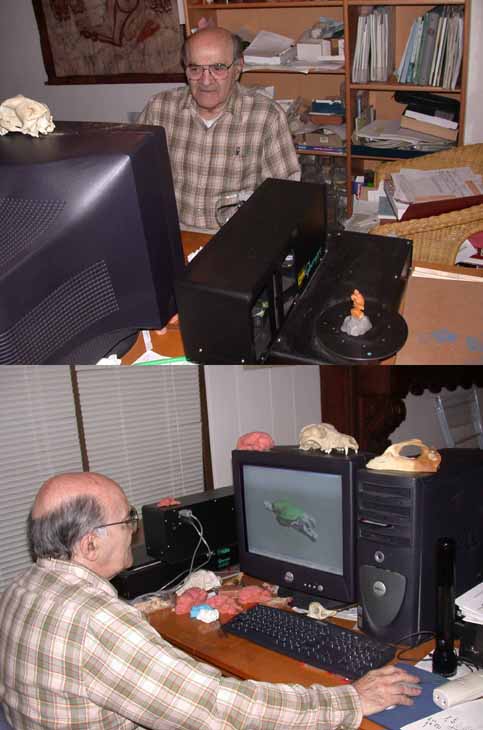Harry J Jerison PhD

Professor Emeritus,
Psychiatry & Biobehavioral
Sciences. UCLA.
hjerison@ucla.edu
My scientific work has been divided between studies of brain
evolution, which is my main current work, and earlier studies of vigilance
(sustained attention). Selected publications on these topics are listed in my online CV, with links to final drafts of a few recent publications as pdf files. Some of my data on brain evolution are illustrated
below: the “brains” of two primates. Weighing
an estimated 1.6kg, Adapis was a late
Eocene relative of living lemurs. It
lived about 40 million years ago. The 250-gram
bushbaby, Galago,
may still sometimes be spotted on an evening’s stroll in a South African forest. The laser
scanner provides a digitized 3D image of the endocast (cast of the cranial
cavity), which enables it to be analyzed quantitatively and compared with living brains. My wife Irene and I
have also co-edited books on brain evolution.

Rendered
“virtual” endocast of the Eocene prosimian Adapis
parisiensis and the brain of Galago crassidens. Endocast neocortical
area (green) is dorsal to the rhinal fissure. Endocast from the Field Museum of Natural History in Chicago (FM 59259);
brain from the University of Wisconsin (62-172): http://brainmuseum.org/; each about 10 ml in
volume.